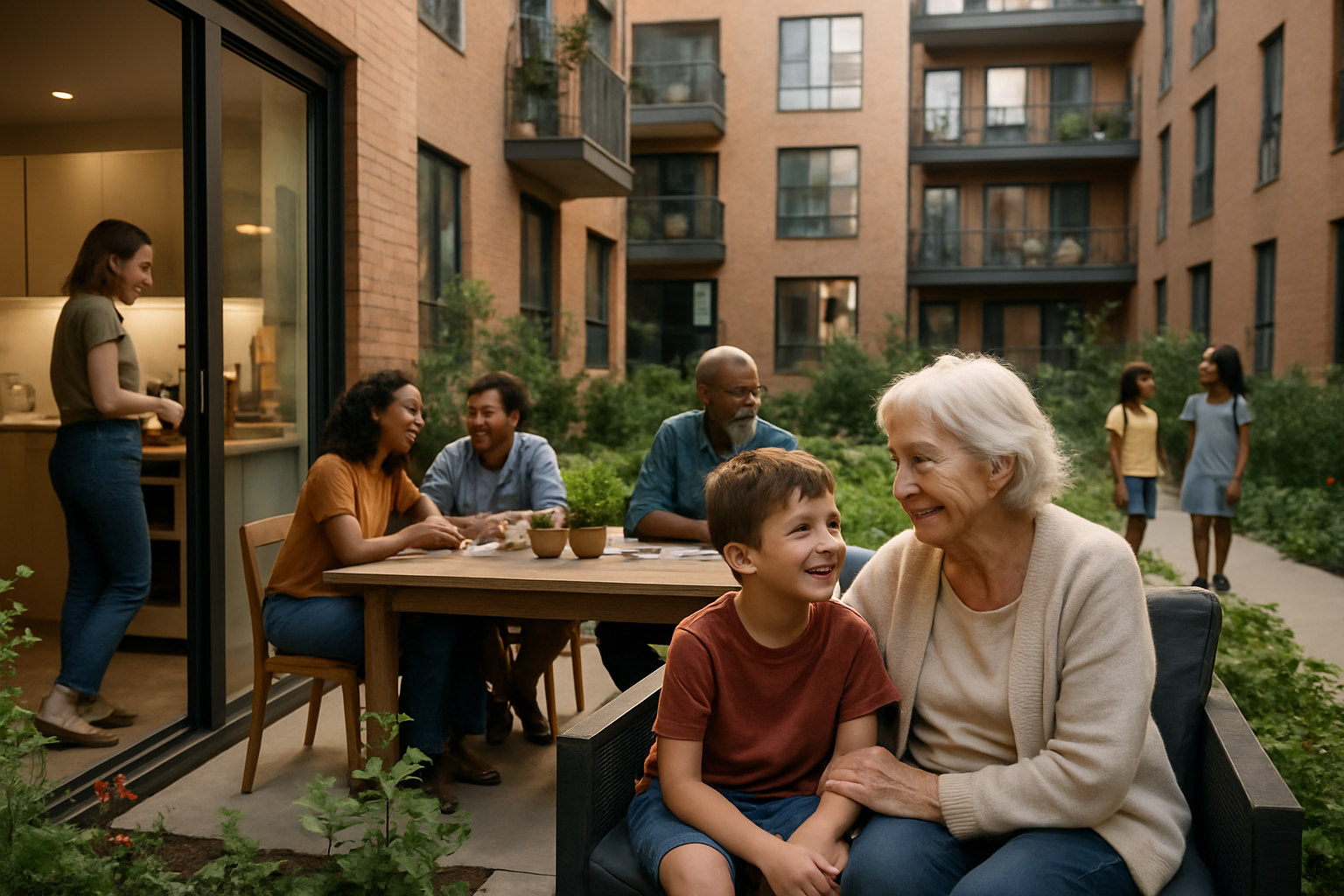Intergenerational Co-Living: Redefining Urban Housing
The landscape of urban living is undergoing a profound transformation as intergenerational co-living emerges as a revolutionary housing model. This innovative approach brings together individuals of diverse ages under one roof, fostering a unique blend of experiences, skills, and perspectives. As cities grapple with housing shortages and social isolation, intergenerational co-living offers a promising solution that challenges traditional notions of community and family structures.

As urbanization accelerated and housing costs soared in major cities worldwide, innovative thinkers began to reimagine living spaces. They sought solutions that could address not only the economic pressures of city living but also the growing epidemic of loneliness and social disconnection. This convergence of economic necessity and social awareness gave birth to the modern intergenerational co-living movement.
The Mechanics of Intergenerational Housing
Intergenerational co-living spaces typically feature private living quarters for each resident or family unit, complemented by shared common areas. These common spaces often include kitchens, living rooms, gardens, and sometimes workspaces. The key distinguishing factor is the intentional mix of age groups, from young professionals and families with children to active retirees.
The structure of these communities varies. Some are purpose-built complexes designed with intergenerational living in mind, while others are retrofitted existing buildings. Many are managed by specialized companies or non-profit organizations that facilitate the matching process and community activities. Residents often engage in shared meals, skill-sharing workshops, and collaborative projects, fostering a sense of belonging and mutual support.
Societal Benefits and Challenges
The rise of intergenerational co-living has far-reaching implications for society. One of the most significant benefits is the potential to combat social isolation, a growing concern in urban environments. By creating opportunities for daily interaction across age groups, these living arrangements can help reduce loneliness and promote mental well-being.
For older residents, intergenerational living offers a chance to remain active and engaged, potentially delaying the need for assisted living facilities. Younger residents, in turn, benefit from the wisdom and life experience of their older neighbors. Families with children find built-in babysitters and surrogate grandparents, creating a support network that can be crucial in high-pressure urban environments.
However, the model is not without challenges. Privacy concerns, potential conflicts arising from different lifestyles, and the need for clear boundaries are issues that must be carefully managed. Additionally, there’s a risk of reinforcing age-based stereotypes if not approached thoughtfully.
Economic and Environmental Implications
From an economic perspective, intergenerational co-living offers a potential solution to the housing affordability crisis plaguing many cities. By sharing resources and space, residents can reduce their living costs while maintaining access to desirable urban locations. This model can be particularly beneficial for young professionals struggling with high rents and older adults looking to downsize without leaving their communities.
Environmentally, the shared living model aligns with sustainability goals. By maximizing the use of space and resources, intergenerational co-living can reduce per-capita energy consumption and waste. Shared spaces often lead to reduced individual consumption of goods, promoting a more sustainable lifestyle.
Cultural Shift and Future Prospects
The growing popularity of intergenerational co-living reflects a broader cultural shift in how we perceive community and family structures. It challenges the age-segregated model that has dominated urban planning for decades, advocating for a return to more diverse, interconnected neighborhoods.
As this trend gains momentum, it’s likely to influence urban planning and architecture. Designers and developers are increasingly considering how to create spaces that facilitate intergenerational interaction and foster community bonds. This shift could lead to more inclusive, vibrant urban environments that better serve the needs of diverse populations.
Looking ahead, the success of intergenerational co-living will depend on careful implementation and ongoing research to refine the model. As cities continue to evolve, this innovative approach to housing has the potential to reshape urban communities, offering a more connected, supportive, and sustainable way of living for people of all ages.





